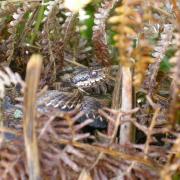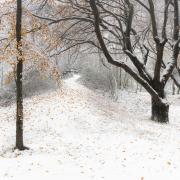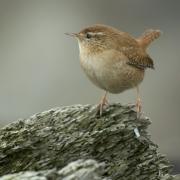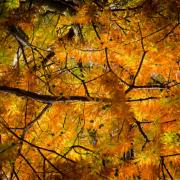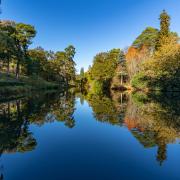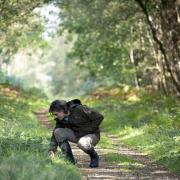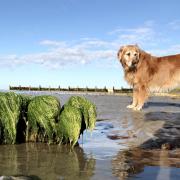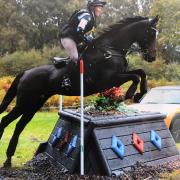Eight hundred years after the Forest Charter safeguarded Britain’s woodland for the use of its people, the Woodland Trust has launched a new initiative to protect ancient woods from more modern threats, as Steven East finds out
A Sunday morning walk in Ashdown Forest is a blessing at any time of year. It’s not hard to drift into reverie and imagine walking through these same ancient woods 800 years ago, perhaps stumbling on an old forester coppicing the trees for fuel, a local farmer grazing his pigs or a group of men from the local village out for a day of hunting deer with bows and arrows. Idyllic scenes to toy with as you walk your dogs.
But for anyone walking through the woods in the time of King John the scene could have been very different. One of those men hunting deer has been reported by the forester, who is in the pay of King John to police his forest (the Royal Forest of Ashdown – as it was then – was his property). The king has sent his men down to administer one of the gory punishments to deter others from stealing his game. They’ve gathered the villagers and nobility of the area and in front of this terrified audience, the man has been stitched alive into the skin of the very deer he killed. Now they jab their spears through the deerskin and into his flesh until he runs terrified into the trees, to be hunted down by a pack of the king’s huge deerhounds who, driven wild by the scent of venison, set upon him.
This is no idle daydream, but one of the punishments meted out for poaching in the king’s forest in the years before the signing of the Forest Charter in November 1217, which is being celebrated and reaffirmed this year on its 800th birthday. Other punishments included blinding and castration, as well as the maiming of the offender’s hunting dogs.
By 1217, about one-third of England had become Royal Forest, thanks to successive land-grabs by ambitious monarchs. Britain’s kings claimed exclusive rights to everything within it – game, wood, even villages. Commoners and even the nobility were frozen out of these areas, which contained most of the fuel, food, materials and medicine in the land. The Forest Charter was added to the Magna Carta two years after its more famous cousin was signed, and was the nobility’s attempt to grab back forest rights for themselves. But in doing so it gave commoners their own rights in the face of authority, which they’ve never forgotten, from the Peasants’ Revolt of 1381 to the Countryside Alliance march of 1998.
The Forest Charter officially prevented corporal punishment for taking deer from the king’s forest and replaced it with fines or imprisonment. It also protected common pasture for those living in it; took away the forest taken by King John; and allowed archbishops, bishops, earls and barons to, “take one or two beasts under the supervision of the forester, if he is to hand; but if not, let him have the horn blown, lest he seem to be doing it furtively.” The ten-year-old Henry III was only 12 months into his 55-year reign when on 6 November 1217 he added his seal to the document. One can almost hear the mistrustful tone of his father, King John, in the demand that his noble servants must still not sneak around his forests without his knowing.
So thank heavens for that good old Forest Charter, which saved the trees for the people of Britain.
Well, the truth is, it didn’t. Forest cover has fallen by a third since 1000 and half of our ancient woodland (forest that’s been in existence since 1600) has been lost in the past 80 years, now accounting for just two per cent of the UK’s land area. What remains are small patches of isolated woodland easily damaged by adjoining activity and prone to being individually mopped up by development.
Taking up the fight on behalf of the people this time around is the Woodland Trust, which is celebrating the 800th anniversary of the issue of the first Charter of the Forest with events across the country, culminating in the launch of the new Tree Charter at Lincoln Castle on 6 November. “The Tree Charter will provide guidance and inspiration to allow us all to appreciate, preserve and celebrate our trees and woods for what they do for us in so many different ways,” says Beccy Speight, the CEO of The Woodland Trust. The trust has asked the public to tell them what trees and woods mean to them. In all, 50,000 Tree Stories have been collected. Some involve childhood memories, such as this one, from somebody simply signing herself Anna: “In 1969, when I was 14, Soles Coppice, a beautiful ancient wood that surrounded the tiny cottage in Sussex that I grew up in was cut down. The owner was taking advantage of government subsidies to grow conifers. Twenty years later, when I moved back to the area, many of the conifers were pathetic specimens, still struggling to come to terms with the Sussex clay they should never have been planted in.”
A more recent example of ancient woodland destruction in Sussex is Pondtail Wood, in Muddleswood Road, Albourne. The owner felled 13 acres of the 20-acre ancient woodland within two months of buying the woodland in March 2016. It was 10 May before South Downs National Park and Forestry Commission issued a temporary stop notice to prevent further work. They later issued a demand that he restore the site. By that time however, waste and drainage channels had been dug and hardcore imported onto the site to create access roads for whatever plans the owner had for the newly felled land. Once these demands were made, he put the land back on the market. A victory for the woods, then? Mid Sussex district councillor, Anthony Watts Williams, doesn’t think so: “My concern is things have not moved as fast as one would like [and] damage has been done that is irreplaceable. This is ancient woodland, you can’t just replace it.”
Sign the charter at treecharter.uk
More…
• Stephen Dalton on his nine-acre Sussex Weald woodland and new wildlife book - Twenty years ago, award-winning nature photographer Stephen Dalton bought a nine-acre wood in East Sussex which he lovingly transformed into a magical haven for wildlife and woodland flowers. As a stunning new book showcasing his woodland paradise is published, he tells Angela Wintle about the pioneering high-speed photographic techniques he uses to capture birds and insects in free flight




